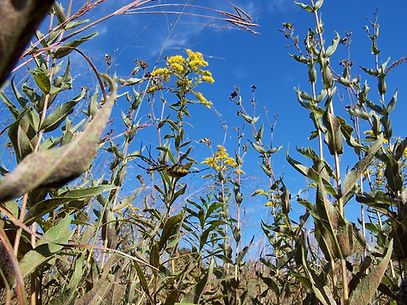
Rexroat Prairie

Prairie Facts: Nature’s Resilient Masterpiece
What is a prairie? A prairie is a grassland ecosystem filled with native grasses, vibrant wildflowers, and minimal tree cover. Once stretching across vast portions of North America, prairies are celebrated for their ecological richness and natural beauty.
Fascinating Prairie Facts:
-
Prairies span the globe. While “prairie” refers to North America’s grasslands, similar ecosystems exist worldwide, from the pampas of South America to the steppes of Eurasia.
-
Tallgrass prairies are nearly extinct. Less than 1% of original tallgrass prairie survives in the U.S., making restored habitats like Rexroat Prairie vital for conservation and education.
-
Prairie plants are environmental superheroes. Their deep roots help store carbon, retain moisture, and reduce erosion, making prairies powerful contributors to climate stability.
-
Fire is a force for renewal. Periodic controlled burns are essential to prairie health, clearing old growth, returning nutrients, and preventing invasive trees from taking hold.
-
Prairies are home to incredible diversity. These habitats support a wide range of native plants, insects, birds, and small mammals — all adapted to thrive in open landscapes.
-
Prairie soil is nutrient-rich. Early settlers were surprised by how fertile the soil was, thanks to centuries of decomposed grasses and healthy microbial life.
-
The prairie helped shape American history. The removal of native grasses contributed to the Dust Bowl of the 1930s, showing just how critical these ecosystems are for soil and air health.